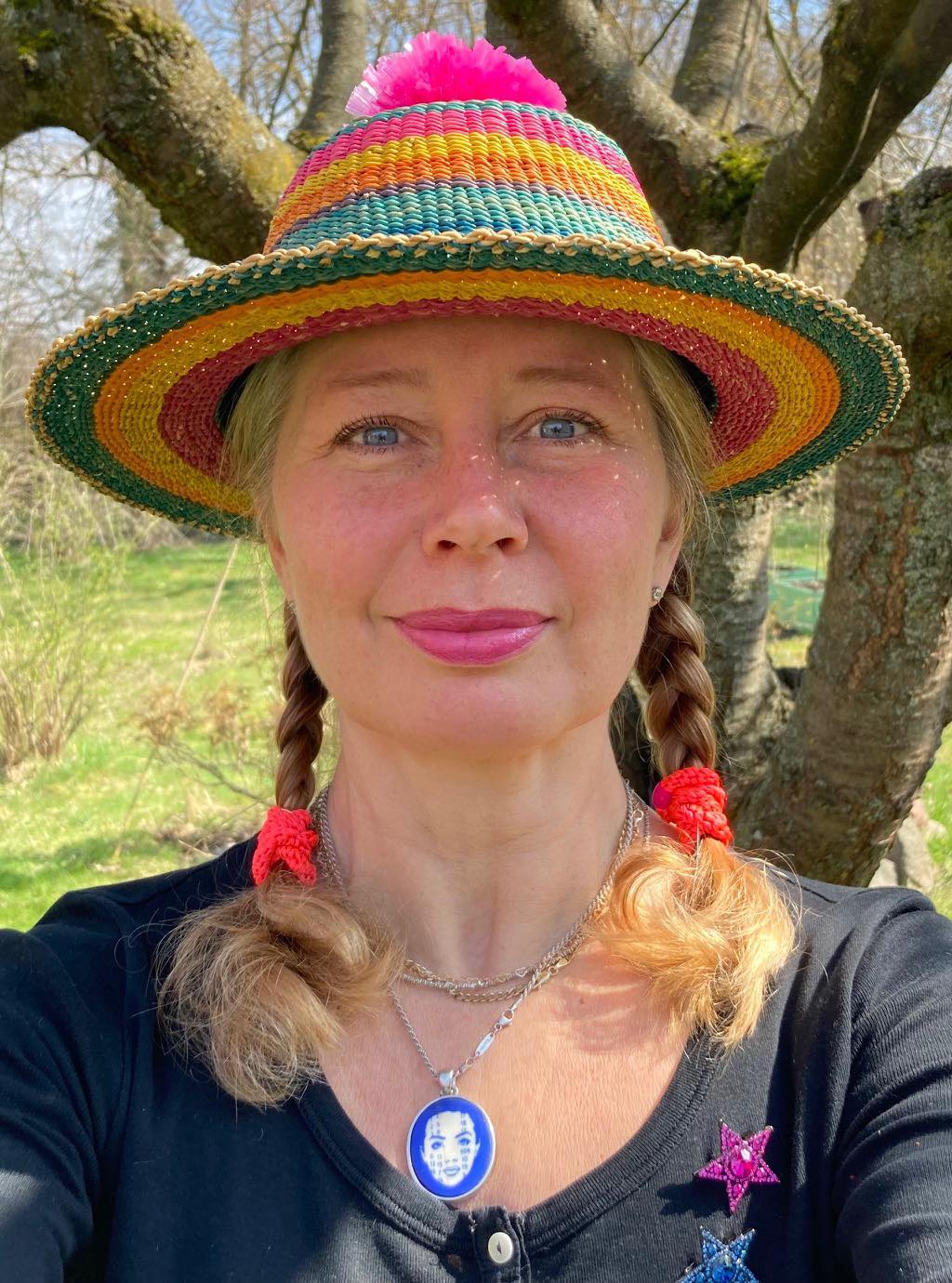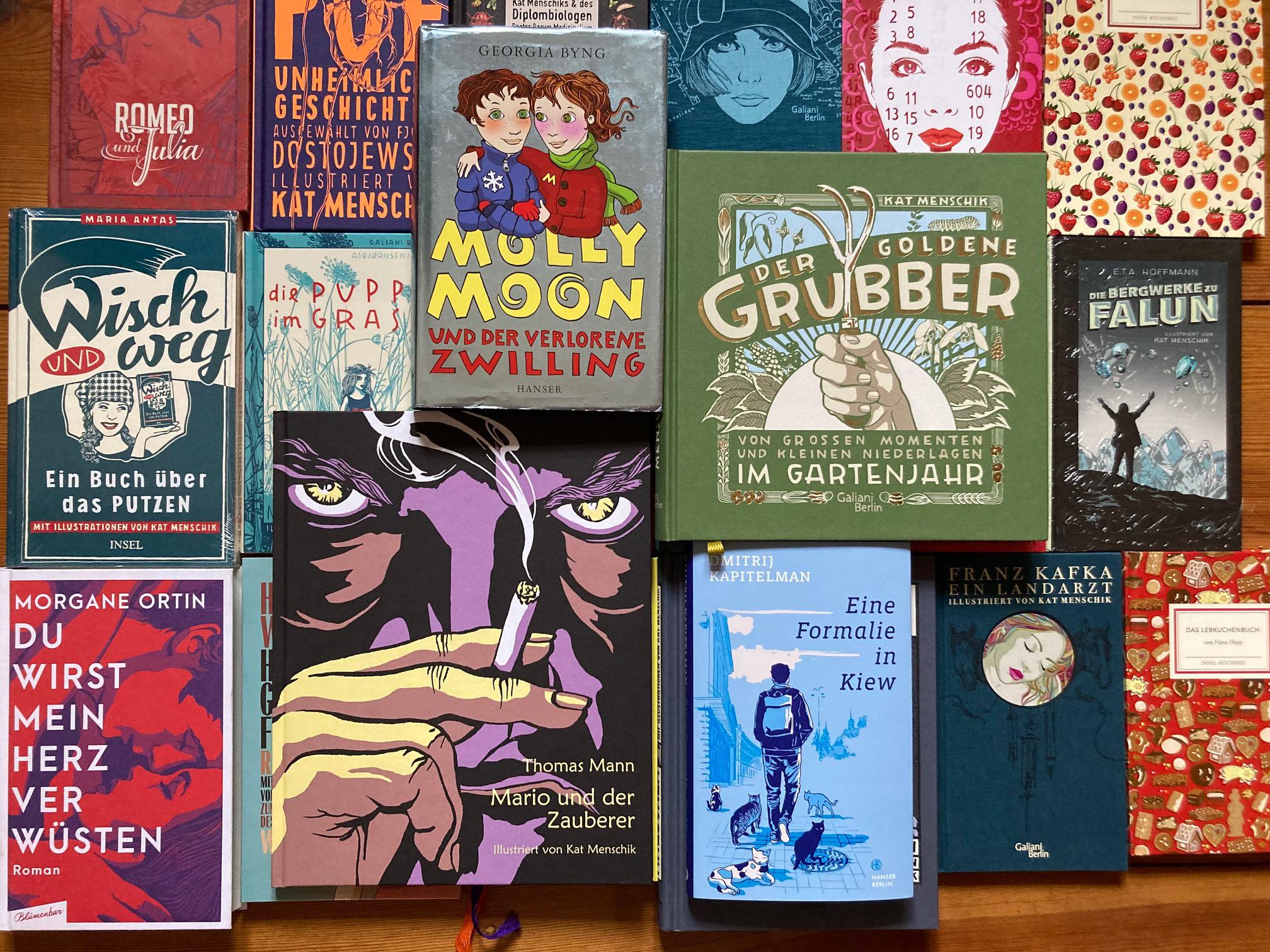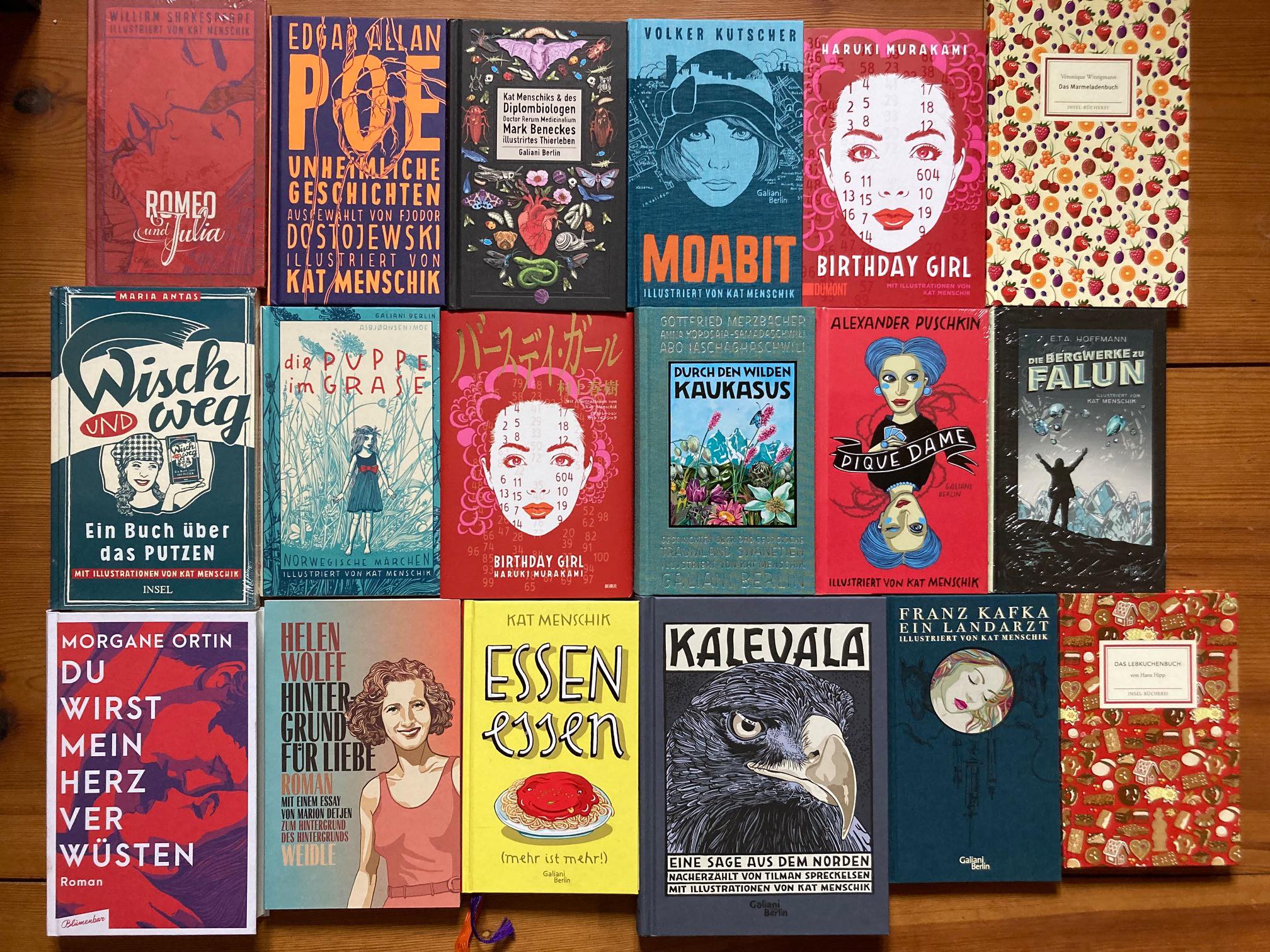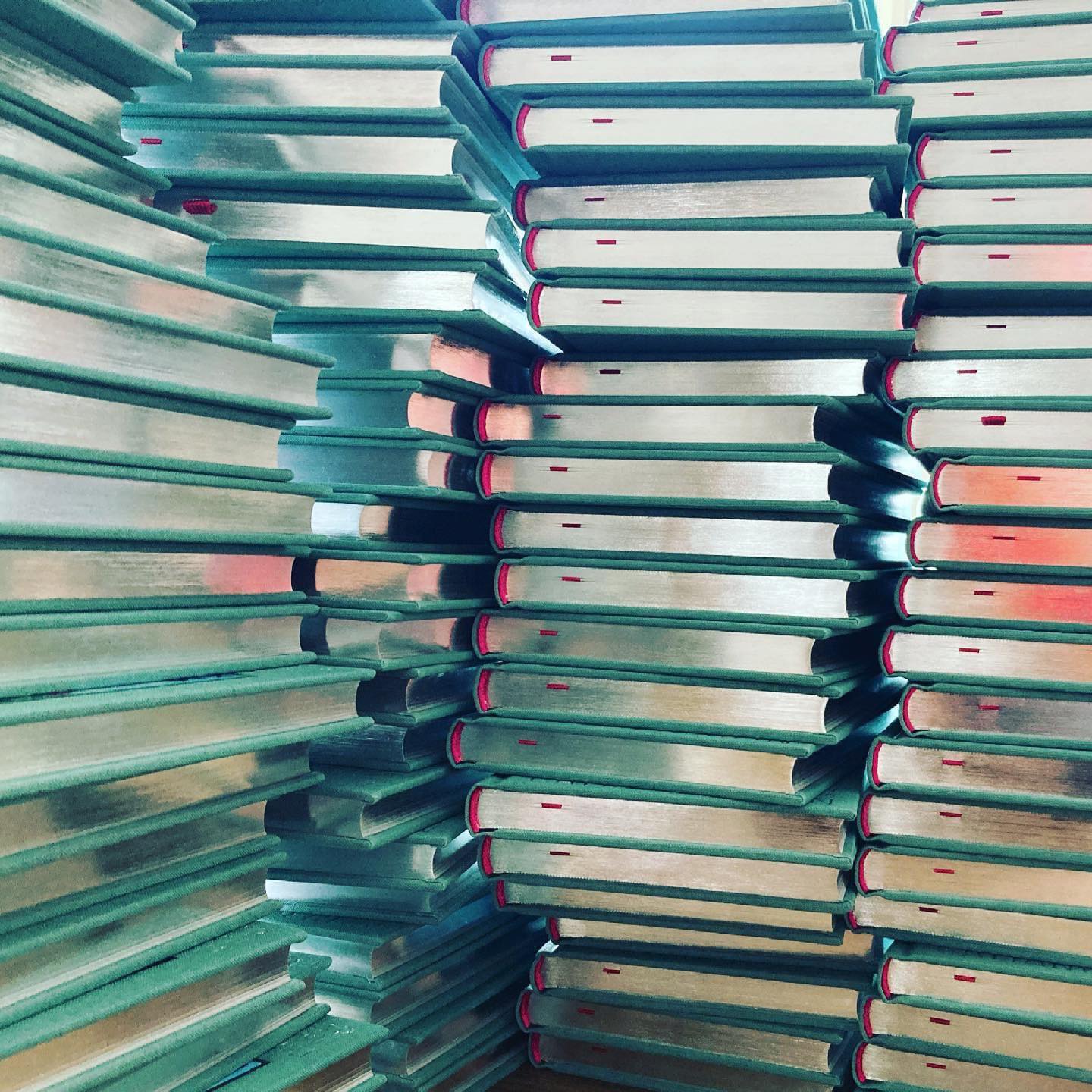I visit the bookstore “Uslar & Rai Buchhandlung” located in Prenzlauer Berg district, Berlin and pick up a small hardcover book. It is a cookbook “Essen essen (mehr ist mehr!)” by German illustrator Kat Menschik. This book is filled with colorful and happy magic that makes you smile from the moment you open the first page. Along with the recipes, anthropomorphized vegetables and kitchen goods appear here and there, pleasing your eyes.
Kat Menschik does all the design herself, from book binding to printing color designation. Each book has a completely different and elaborated design featuring embossing or silver edges, which is just like a luxuriously condensed pop art work or a beautiful painting that would make you want to collect. There are many different tricks in Haruki Murakami’s widely read works that only she can lay out. I interviewed her as I wanted to know more about the one and only world created by Kat Menschik.
A trick of illustration for filling the invisible story drawn in the gap
――You have been active in various media from newspapers to magazines and to comics. But in terms of illustration for novels, you have worked on a lot of works by famous authors since En Vetemaa’s “Estonian Water Spirits” (Die Nixen von Estland) published in 2002. I heard you like dark fantasy and surrealistic works, but is your style the decisive factor when you take on illustration works?
Kat Menschik : I have been working as an illustrator for a major German newspaper (Frankfurter Allgemeine) for 20 years and published two books a year. So far, along with classical works such as Shakespeare, Franz Kafka, E.T.A Hoffman, E.A Po, and Scandinavian fairy tales, I have also worked on cookbook written and drawn by myself, books on animals by a well-known German biologist which was rated as the bestseller in “DER SPIEGEL” for a long time, and a detective novel written by the original author of the popular German TV drama “Babylon Berlin”. My series of books come in a variety of genres, including classical and contemporary writers. As shown above, I really love dealing with different themes. So the most enjoyable time for me is when I’m making a book. I invest great deal of effort in elaborating every single book by choosing the materials, coloring the top edge of the book, and using special paper. As a result, my publisher always sells them as “the most beautiful book in the world”.
――Your illustrations are not simply beautiful but have a fantastical and mysterious beauty into which readers would feel themselves being sucked, and a strong and memorable impact. When you draw an illustration, do you always get inspiration from the story of the work you work on? It was very impressive that you said in some interview that drawing creatures that do not appear in the story will steer the readers into various directions, but how do you come up with what to draw?
Cut: Yeah, you’re right. As I always say, my work is based on the premise that it must not let readers get bored, which I think is very important. It means that I don’t have to draw what is already told in the story again. I think that’s meaningless. I commit my feelings to the text and draw what I can think of. It may be something that has nothing to do with the text readers are reading. However, I fill in the invisible stories drawn in the gaps between the lines of the stories with pictures. That’s the trick.
A rare environment where the illustrator can freely choose the author she wants to draw illustration for.
――In Japan, there are four works that we can enjoy your tricks: Haruki Murakami’s “Nemuri,” “Attacking the Bakery,” “The Strange Library,” and “Birthday Girl.” Among Murakami’s works you have been loved for a long time, Which one is your favorite?
Cut: I first met Murakami’s work decades ago and I have been reading his works since then, but my favorite is “A Wild Sheep Chase”.
――You met Haruki Murakami through the German publishing house “DuMont”. Please tell us how you came to draw illustrations for his works.
Kat: Like most of my work so far, not just in terms of Murakami’s works, I got an offer from the publisher. As for Murakami’s work, I got a phone call and was asked if I want to draw illustrations for his short story. At that time, I was working on the job that I was offered. Currently, the books with my illustrations are published as my own book series, but even from a global perspective, it is extremely rare for an illustrator to freely choose the authors she/he wants to work for. Of course, I would love to draw illustrations for Murakami’s work and publish it as well. Can you ask him if he wants to do it?
――As you said, I’ve never heard of any other illustrator appointing authors with whom she/he wants to work. The story readers learn through your illustration seems to have a different impression and world from the original. How did you feel when you actually worked with Murakami of whom you had always been a fan?
Kat: I face Murakami’s work and cookbooks in the same way, but first of all, I need an idea that can be drawn from each sentence. That is the most important thing in designing a book. What is important is the message that the colors and shapes, the contents of the ideas and the pictures that come to mind mean. All of my books look different in style of design, but you can tell from the touch of the illustration that it’s my work. You’ll notice that the book bindings are always different, which is because I want you to enjoy seeing the books, not just reading them. I put in a lot of ideas, wishing to surprise my readers every time.
In Murakami’s work, first of all, he liked my illustration, so I was able to work perfectly to the extent that there is nothing more to ask for. It is very nice that the author is pleased with the illustration, which makes me want to look at each story again with another interpretation.
Beautifully embossed design in pale colors and luxurious silver edges
Kat Menschik
Born in 1968. German illustrator and draftsperson. Her career as an illustrator began in the 1990s when she performed as a co-publisher and editor of the comic magazine “Spunk” and published “A.O.C.”. Since 1999, she has also become known as a cartoonist, with a long-term serialization of “World Recipients” in the Berlin regional edition of the Frankfurter Allgemeine newspaper (FAZ) published on Sunday. After that, she began to work on illustrations for novel books. She is currently a freelance illustrator, contributing works to Feuilleton of FAZ and German magazines. She has also drawn illustrations for En Vetemaa’s “Estonian Water Spirits” and Haruki Murakami’s “Nemuri” and “The Strange Library”.
Interpreter:Yuka Yanagihara







